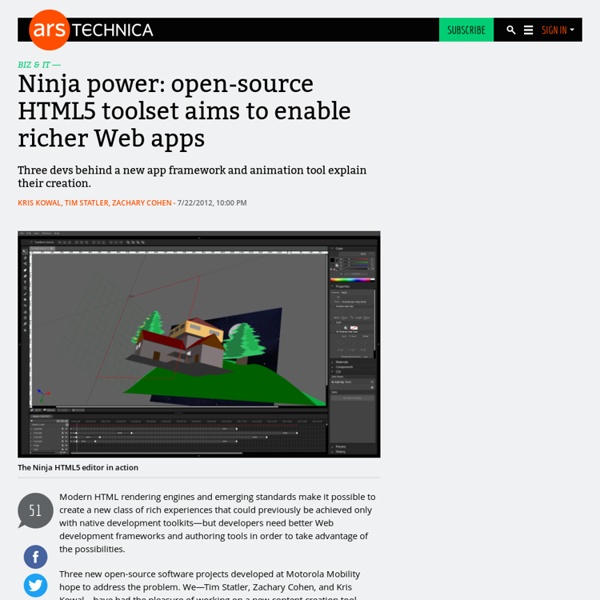Ninja power: open-source HTML5 toolset aims to enable richer Web apps

Real Time Multiplayer in HTML5
Multiplayer and browsers When you consider making multiplayer games, there are many methods available for creating a game that friends can play online. There is a good variety of multiplayer game types - take for example a card game you play synchronously with friends. Turns are made, information is exchanged in (semi) real time and the game progresses in discrete steps. Another example, Chess, can be asynchronous. Players take their time, contemplating possible actions and play their next move one week from now. Card games and Chess both usually require communication with a server and communication with the other players in order to work online. The trouble with these methods is the delay, posting a message and waiting for a response each time is just too slow. Luckily, in modern browsers we can take one step higher, and have a real time connection between a server and clients. The technologies that we have chosen and why Socket.io Node.js Canvas/HTML5 Getting into the gameplay Get the code
Related:
Related:



